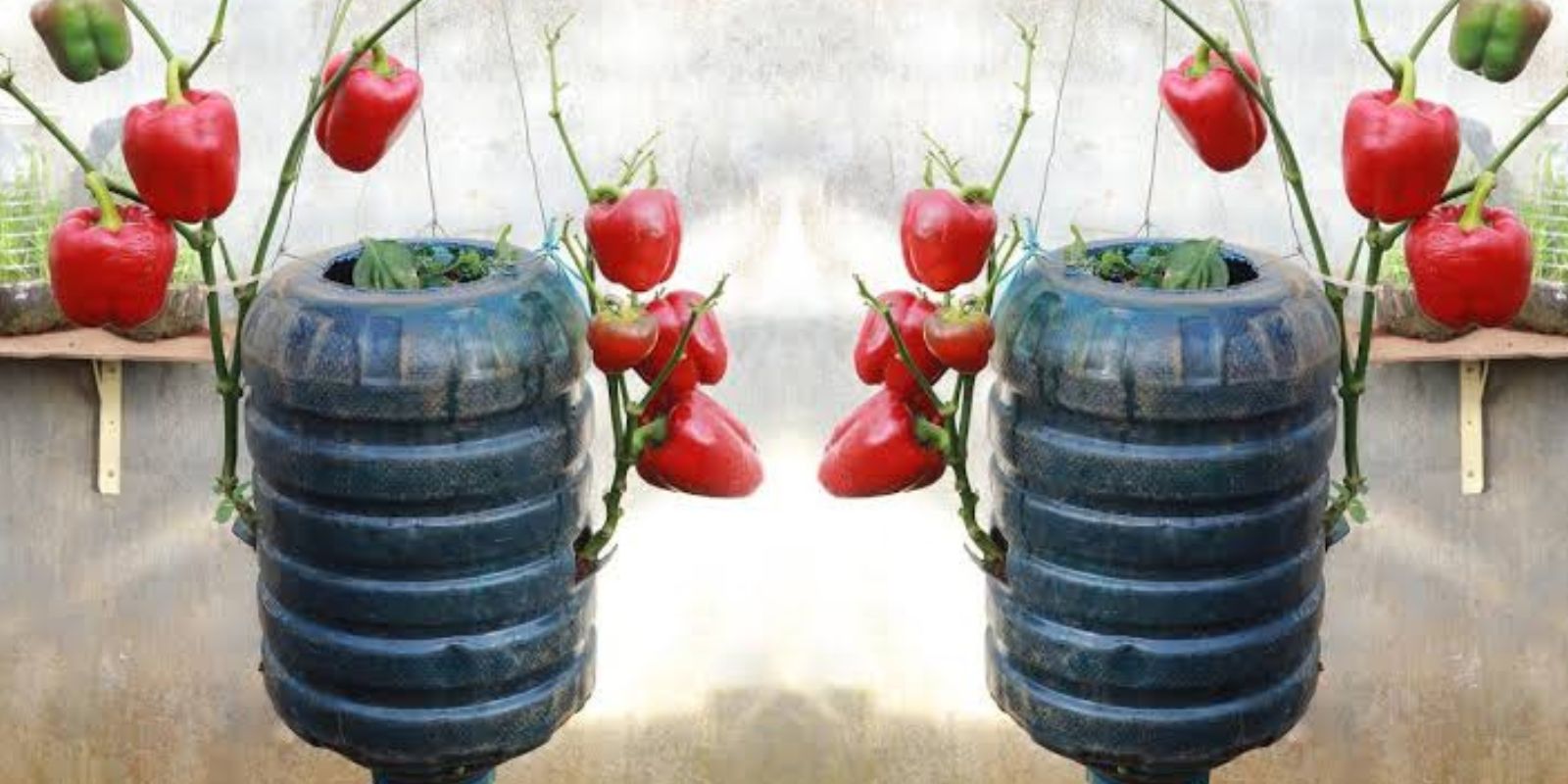Introduction
Gardening at home has evolved into an exciting and creative way to cultivate fresh produce. One innovative method that has caught the attention of green thumbs everywhere is growing peppers upside down. Not only is this technique visually striking, but it also maximizes limited space, improves airflow, and reduces exposure to soil pests. To make it even more exciting, you can combine pepper plants with fruits like strawberries or herbs in the same container, creating a multi-crop system that saves space and yields diverse harvests. In this guide, we’ll dive into the step-by-step process of growing peppers upside down, its benefits, and tips to ensure a thriving harvest.
Benefits of Growing Peppers Upside Down
Before getting into the “how,” let’s explore the “why.” Growing peppers upside down has numerous benefits:
- Space-Saving: Ideal for small gardens, patios, or even balconies.
- Improved Air Circulation: Reduces the risk of fungal infections and diseases.
- Ease of Maintenance: No need to weed or deal with soil-borne pests.
- Healthy Root Growth: Gravity promotes strong root systems by keeping excess moisture away.
- Aesthetic Appeal: Hanging plants make for a beautiful and functional decoration.
Step-by-Step Process to Grow Peppers Upside Down with Fruits
1. Choosing the Right Container
To start, select a sturdy container designed for upside-down gardening or repurpose a bucket or hanging planter. Ensure it has a wide enough hole (2-3 inches in diameter) at the bottom to accommodate the plant stem. Containers with a hook or strong handles for hanging are ideal.
2. Picking the Right Pepper and Fruit Varieties
- Peppers: Compact varieties like bell peppers, banana peppers, jalapeños, or chili peppers work best for this method.
- Fruits/Companions: Choose lightweight, low-maintenance plants like strawberries, basil, or mint to grow on the top layer of the soil.
3. Preparing the Container
- Line the inside of the container with a small piece of fabric or foam to prevent soil leakage but allow the plant stem to pass through.
- Insert the pepper seedling through the bottom hole, carefully threading its stem downward. The root ball should remain inside the container.
4. Adding Soil and Planting Companions
- Use nutrient-rich, well-draining potting soil mixed with compost for added fertility.
- Gently fill the container around the roots of the pepper plant, ensuring stability.
- Leave space at the top to plant companion fruits or herbs like strawberries or basil.
5. Hanging the Planter
- Securely hang the planter in a location that receives 6-8 hours of sunlight daily. A sturdy hook or support system is essential to handle the weight of the soil and plants.
6. Watering and Fertilizing
- Water the planter regularly to keep the soil moist but not waterlogged. Gravity will naturally draw water to the roots of the pepper plant.
- Fertilize every 2-3 weeks with a balanced liquid fertilizer to support growth.
7. Pruning and Maintenance
- Prune any excess leaves or branches to encourage better airflow and focus the plant’s energy on fruit production.
- Remove any weeds or pests that may appear on the topsoil.
8. Harvesting
- Peppers are ready to harvest when they reach full size and display vibrant colors.
- For companion fruits like strawberries, pick them as soon as they ripen to encourage further production.
Tips for Success
- Proper Support: Make sure the hanging system is strong enough to hold the weight of the soil, plants, and water.
- Regular Monitoring: Check for signs of nutrient deficiencies, pests, or diseases regularly.
- Combine Plants Wisely: Companion plants should have similar water and sunlight requirements to avoid conflicts.
- Rotate the Planter: Turn the planter occasionally to ensure all sides receive adequate sunlight.
- Use Mulch: Adding a layer of mulch on the topsoil can help retain moisture for companion plants.
Creative Companion Planting Ideas
Pairing your upside-down peppers with fruits or herbs adds variety to your harvest and enhances the visual appeal. Here are some great combinations:
- Peppers and Strawberries: The classic pairing of spicy and sweet creates a perfect mix.
- Peppers and Basil: Basil complements peppers in the kitchen and helps deter pests like aphids.
- Peppers and Mint: Mint provides a refreshing aroma and grows well in confined spaces.
- Peppers and Marigolds: Planting marigolds on top adds a splash of color and repels harmful nematodes.
Common Mistakes to Avoid
- Overwatering: Hanging planters drain quickly, so avoid overwatering, which can lead to root rot.
- Using Weak Containers: Ensure your container can withstand the weight and weather conditions.
- Poor Sunlight: Peppers thrive in full sun, so avoid hanging planters in shaded areas.
- Ignoring Pruning: Regularly trim your pepper plants to prevent overcrowding and improve airflow.
Why This Method Is Worth Trying
Growing peppers upside down isn’t just a gardening trend—it’s a practical, innovative, and rewarding method for home gardeners. It allows you to maximize small spaces, reduce the risks of traditional planting, and produce fresh, organic peppers and fruits in a visually stunning way.
Conclusion
Upside-down gardening with peppers and fruits is an excellent way to combine functionality with creativity in your garden. Whether you’re a seasoned gardener or a beginner, this method is easy to implement and offers abundant rewards. From saving space to enjoying a diverse harvest, the possibilities are endless.
Ready to try this unique gardening technique? Share your thoughts, or let us know what combination you’d grow! Happy gardening!

